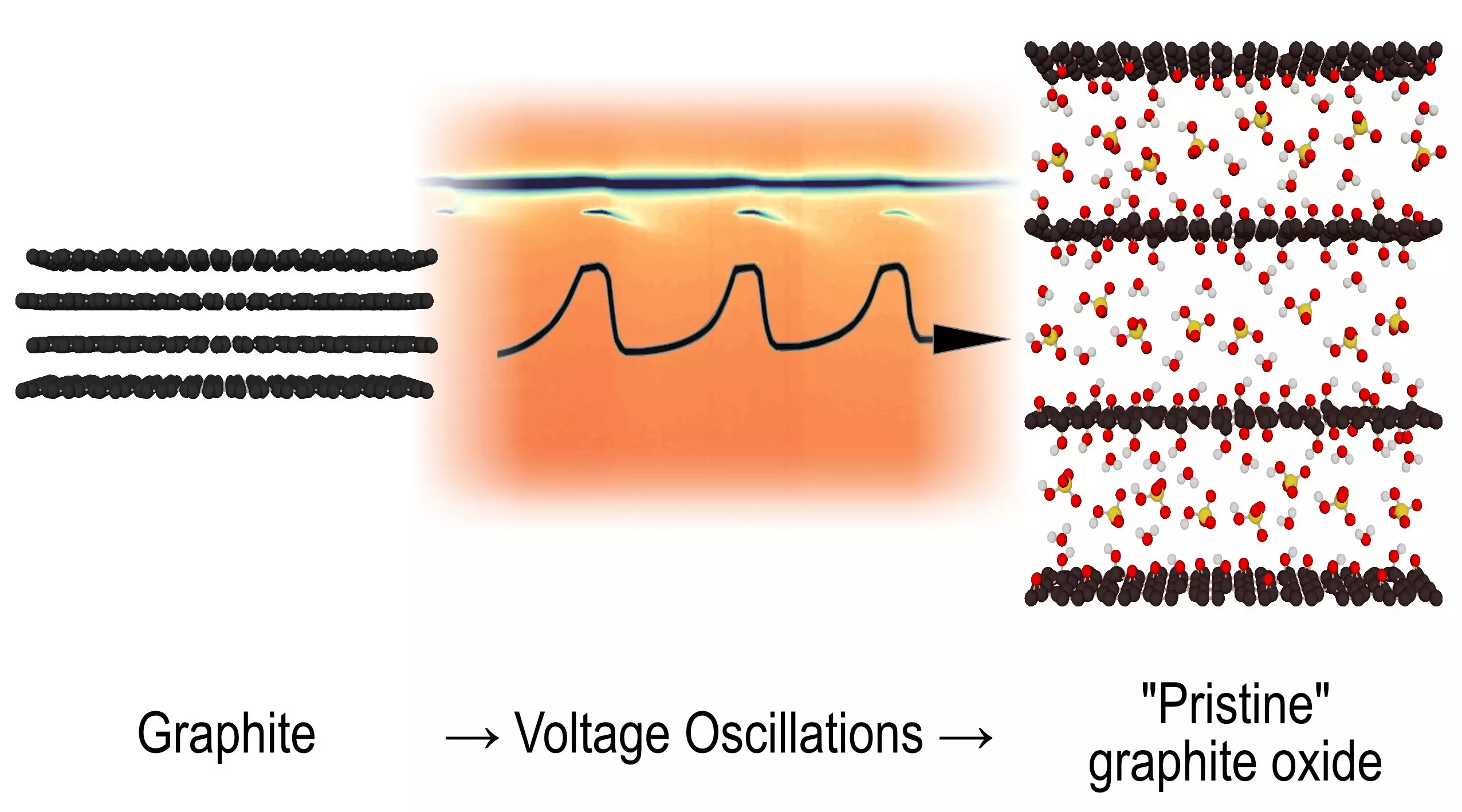For decades, scientists have grappled with the complex nature of oscillating reactions, particularly in relation to materials such as graphite. Recent research conducted at Umeå University has peeled back the layers of this enigma, shedding light on a reaction that has puzzled the scientific community for an astonishing 50 years. The study, published in the renowned journal Angewandte Chemie, presents compelling evidence and insights into how graphite transitions to graphite oxide through electrochemical oxidation. This research not only explains the long-standing mystery but also introduces a new type of oscillating reaction that could reshape our understanding of chemical kinetics and mechanisms.
Significance of Structural Snapshots
At the heart of this groundbreaking study is the innovative use of synchrotron techniques, which allow researchers to capture rapid structural snapshots of the graphite undergoing oxidation. In conventional settings, observing such rapid transformations could prove difficult, often resulting in the loss of crucial data about the intermediate phases of a chemical reaction. However, the use of X-ray diffraction scans—executed in mere seconds—has equipped the researchers with the ability to document fleeting changes that occur during the reaction cycle. This advancement is not just a technological feat; it opens up a new avenue for exploring the intricacies of chemical reactions—both in a laboratory and in the natural world.
One of the key revelations from the research is the discovery of an intermediate phase that oscillates—emerging, disappearing, and re-emerging throughout the reaction cycle. This oscillation signifies a departure from previously understood reactions, indicating a patterned rhythm between different structural states rather than a linear progression. Alexandr Talyzin, a leading figure in the study, emphasizes the unexpected nature of this finding: what began as a focused inquiry into electrochemical behavior evolved into profound revelations about fundamental chemical processes.
In essence, the researchers have not merely resolved an old mystery; they have encountered an entirely new phenomenon. This oscillating reaction diverges from traditional examples seen in organic chemistry, where oscillations were typically linked with biological systems. By demonstrating that inorganic chemistry can display similar patterns, the research fuels the idea that oscillating reactions are woven into the very fabric of chemical interactions.
Implications for Future Chemical Theories
The implications of this discovery resonate far beyond the confines of a laboratory study. By expanding our understanding of oscillating reactions, this research paves the way for the development of fresh theories and models in the discipline of chemistry. Historical context increases the weight of this significance: the theories surrounding oscillating reactions first gained recognition when Ilya Prigogine was awarded the Nobel Prize in 1977. His work laid the groundwork for non-equilibrium thermodynamics, which illuminated how order arises from chaos—a principle that could be crucial for interpreting the newly identified oscillating reaction observed by Talyzin and his team.
The researchers at Umeå University harbor aspirations that their findings could catalyze further breakthroughs. They believe this new oscillating reaction could be a precursor to discovering additional phenomena, which would further enrich our comprehension of kinetic processes. The study doesn’t just serve as an endpoint; it acts as a launching pad for future inquiries that promise to unravel the complexities of chemical systems.
The recent findings from Umeå University challenge long-held perceptions about chemical reactions, particularly oscillating ones. By elucidating the process through which graphite transforms into graphite oxide, the researchers have established a transformative framework that combines technological advancement with theoretical exploration. As they continue to examine the behaviors and behaviors of materials at the atomic level, it is evident that this discovery heralds a new frontier in chemical research, poised to redefine how scientists understand and manipulate the dynamics of matter. As we stand on the precipice of this new chapter, we can only anticipate the profound implications it may yield for future scientific explorations and technological advancements.


Leave a Reply